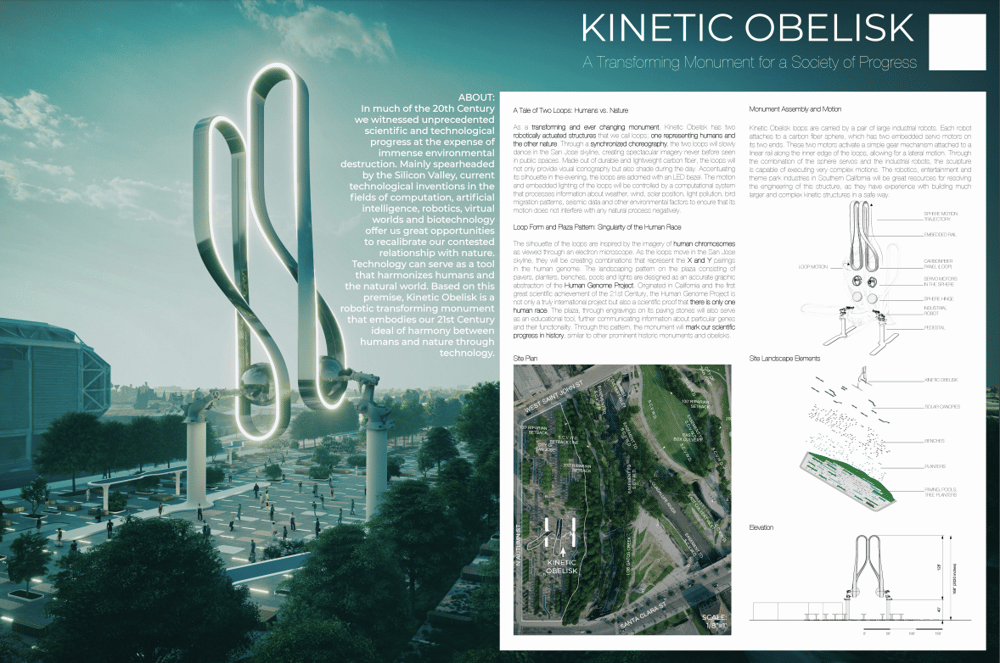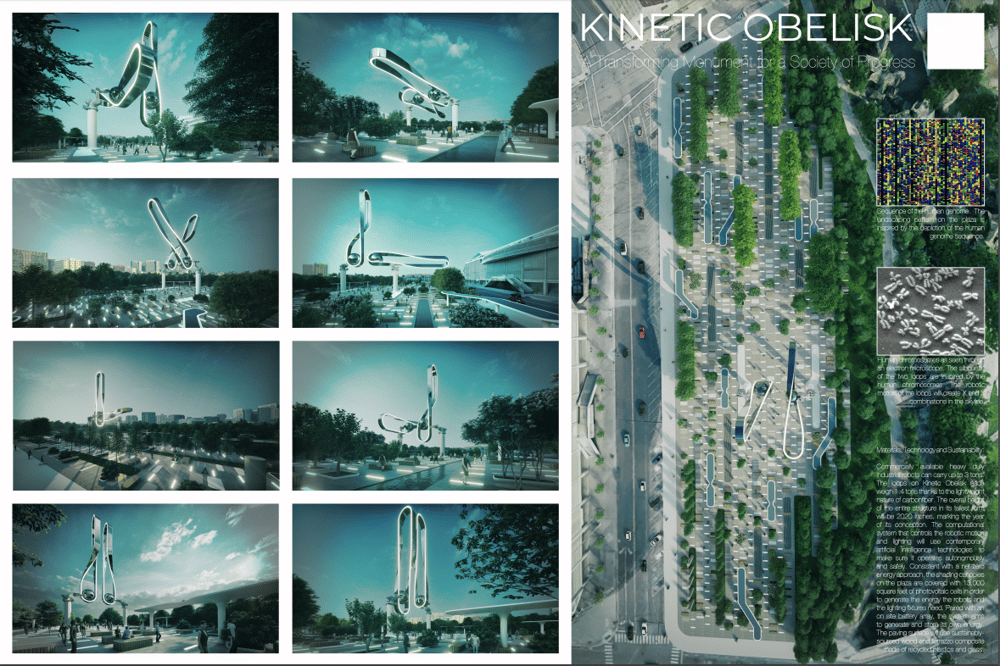In much of the 20th Century we witnessed unprecedented scientific and technological progress at the expense of immense environmental destruction. Mainly spearheaded by the Silicon Valley, current technological inventions in the fields of computation, artificial intelligence, robotics, virtual worlds and biotechnology offer us great opportunities to recalibrate our contested relationship with nature. Technology can serve as a tool that harmonizes humans and the natural world. Based on this premise, Kinetic Obelisk is a robotic transforming monument that embodies our 21st Century ideal of harmony between humans and nature through technology.


In much of the 20th Century we witnessed unprecedented scientific and technological progress at the expense of immense environmental destruction. Mainly spearheaded by the Silicon Valley, current technological inventions in the fields of computation, artificial intelligence, robotics, virtual worlds and biotechnology offer us great opportunities to recalibrate our contested relationship with nature. Technology can serve as a tool that harmonizes humans and the natural world. Based on this premise, Kinetic Obelisk is a robotic transforming monument that embodies our 21st Century ideal of harmony between humans and nature through technology.
Kinetic Obelisk has two robotically actuated loops; one representing humans and the other nature. Through a synchronized choreography, the two loops will slowly dance in the San Jose skyline, creating spectacular imagery never before seen in public spaces. Made out of durable and lightweight carbon fiber, the loops will not only provide visual iconography but also shade during the day. Accentuating its silhouette in the evening, the loops are adorned with an LED bezel. The motion and embedded lighting of the loops will be controlled by a computational system that processes information about weather, wind, solar position, light pollution, bird migration patterns, seismic data and other environmental factors to ensure that its motion does not interfere with any natural process negatively.
The silhouette of the loops are inspired by the imagery of human chromosomes. As the loops move, they will be creating combinations that represent pairings in the human genome. The landscaping pattern on the plaza is designed as a graphic depiction of the the Human Genome Project. The Human Genome Project is not only a truly international project but also a scientific proof that there is only one human race.
Current industrial robots can carry up to 3 tons. The loops each weigh 1.4 tons thanks to the lightweight nature of carbon-fiber. The computational system that controls the robotic motion and lighting will use contemporary artificial intelligence technologies to make sure it operates autonomously and safely. Consistent with a net-zero energy approach, the shading canopies on the plaza are covered with 13,000 square feet of photovoltaic cells in order to generate the energy the robots and the lighting fixtures need. Paired with an on site battery array, the system aims to generate and store its own energy. The paving surface will use sustainably-sourced wood and terrazzo composite made of recycled plastics and glass.




